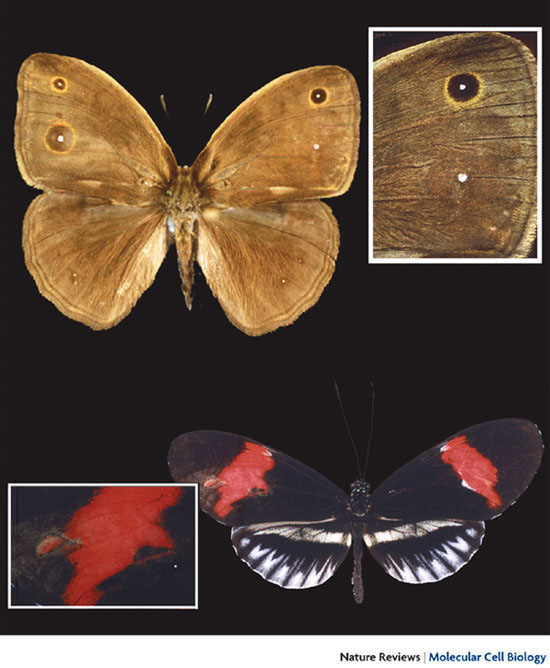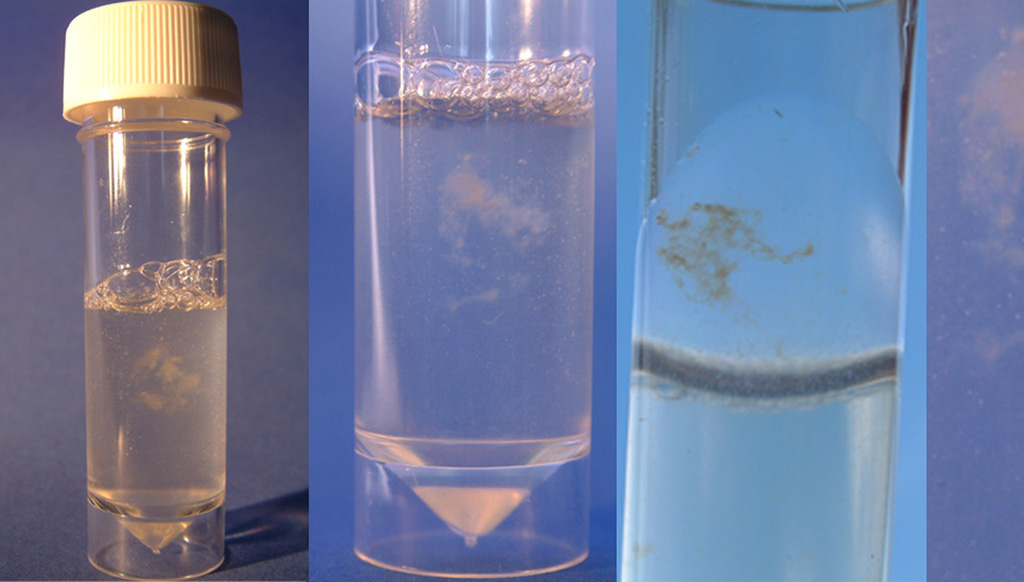Bio-art: Biology "as canvas and paint"
For Marta de Menezes, the lab is her space of artistic creation. She uses biology "as canvas and paint", manipulating, side by side with scientists, DNA, cells, or proteins. She graduated in Painting from the Faculty of Fine Arts in Lisbon and decided to change the brushes for the pipettes, having worked as a resident artist in numerous labs in the Netherlands, the United Kingdom and, more recently, in Australia, where she spent the last six months. She is now back to Portugal to launch "biological art" in national labs. NOTICIAS MEDICAS interviewed this "lab artist" who is guided by the same rigour and method of a scientist, but does not intend to discover "any Universal Law". In vogue in the United States since the 1980s, bio-art "creates many resistance and raises numerous ethical problems, because what is done in the name of art is to manipulate something alive or that has to do with life."
Marta de Menezes has created new patterns on the wings of butterflies; she has painted cromossomes; she has buit self-portraits using proteins; she has compared human genes to those of fruit flies ou zebra-fishes and she has built a “live sculpture” with rat's neurons.
“Biology and biotechnology have evolved so rapidly, specially with the discovery of the DNA, that it invaded society in general. Scientists can no longer think that what they research is restricted to science. People are interested and they want to learn. It was inevitable that artists would start to consider science as an object of study, and, eventually, as an object of work”.
In the so-called “bio-art” ― a label that Marta de Menezes accepts “with some reserve” ― the work must be produced in the lab in close collaboration with scientists, manipulating “something that's alive or that's connected to life”.
This artistic movement began to develop in the mid-eighties, with the pioneering works of the american Joe Davis, “the first artist who entered in a scientific lab”: his first project, “Microvenus”, has codified in DNA an image of the female genitalia, which the artist drew “with zeros and ones”; this DNA molecule was then introduced in multiplying bacteria. “He likes to say that he's the artist with the most copied artwork in the world”.
So, the aim of bio-art is not “illustrating” or creating a canvas “with spectacular images of science”. What these “biological” artists do is “to manipulate and make life take the form that they want”, having in mind that “often a project either evolves much quicker than we expect, or we can't control it and we end up with something else...”
It's not so much different from conventional art, assures Marta de Menezes. “Since I started to learn about art, I had to realise that any image that I might have in my head would never be achieved on the canvas, because the hand, the canvas and the paint limit us. With biology, with life, it's exactly the same thing! It's always a long process, where we zigzag trying to get close but we end up miles away...”
Art and Science: “I don't have to discover any universal law”
Learning science is a precondition to envisage this kind of projects. “If we don't understand the science, we won't be able to think about it to make art”. For Marta de Menezes this is one of the most interesting parts of her work. “It's something that I love, because I'm always learning new things and going through different areas of science”.
Each new project implies an immersion in scientific papers and discussions with various researchers, to whom she sometimes has to ask “the most silly questions!”
Other challenge that these artists must face is to work as a team and to adapt to the lab's rules and protocols. Like any scientific paper “that is never signed by one person only”, these “biological” pieces are always the result of a team work between the artist and the researchers.
So, how to set the boundaries of Art and Science? “The difference is that I'm not trying to answer to any scientific question. My goals are completely different. I don't have to discover a universal law or even to contribute for it. I don't ask biology the same questions and I don't have to answer why things happen this or that way”.
The scientific component has to do with the expertise that is needed to use certain types of instruments, that is, “knowing how things work in order to manipulate the images”. In her projects, Marta de Menezes tries to “demonstrate a concept and get people to think about it”, but she reckons: “the conclusions will always be very limited, either in science or in art”.
“The artist also has to face the ethics committee”
We could argue that this kind of creation is frivolous, because it implies a manipulation of living things and of biological material that dodges the objectives of scientific research. Marta de Menezes concedes that bio-art is peculiar and creates opposition by raising many ethical problems. “Ethics is a permanent question that I constantly need to re-evaluate”.
There are boundaries already in place by “rules which are law”. In that sense, she argues, “I don't do anything that scientists can't do”; Marta de Menezes has to follow the same protocols. “An artist also has to face the ethics committee and we can't even think that an artist has the right to do everything that a scientist does”.
An example of the controversies that these creations might raise is animal manipulation. In her piece “Tree of Knowledge”, developed at SymbioticA in Australia, Marta de Menezes used lab rat's neurons to build a “living sculpture”. The control was tight: “I couldn't sacrifice animals for the sake of my art. I could only use animals that were already being sacrificed to scientific research. I would extract the neurons for the researchers and I could only use for my work the ones that they wouldn't need”.
The progression of her artistic work was always dependent on the rhythm of the scientific work, which created some frustrations. In the case of “Tree of Knowledge”, Marta de Menezes had to wait about five months for the ideal conditions: “I wasn't able to make the experiment either because the neurons couldn't be extracted since the embryo was too young, or because there weren't enough neurons, and in that case they all went to the researchers.” Nevertheless, she does not consider herself in any way “limited”, because in that particular project, she would never feel confortable using an animal “just to make a piece of art”. That's her “personal boundary”. “I don't think that we should do everything either for the sake of art, or for the sake of science”.
Marta de Menezes´ works have been displayed at Ars Electronica 2000, at Linz (Austria), at Perth Institute of Contemporary Arts (Australia), in France (Le Lieu Unique, Nantes), at the Gallery of Modern Art, in Birmingham (UK), at Fundação Calouste Gulbenkian, in Lisbon, at ARCO’04, in Madrid, or at the Biennale of Electronic Arts of Perth.
Interview published on the medical newspaper NOTÍCIAS MÉDICAS nº2861, 11th May 2005.
Translated from the Portuguese by Filipa Lourenço

Her first bio-art piece, “Nature?” (1999-2000), was developed at the Institute of Evolucionary and Ecological Sciences, University of Leiden, Holland. In this project, Marta de Menezes created new patterns on the wings of butterflies. “I was absolutely fascinated by the idea of creating a unique butterfly, an original piece of art”. It's a “recreation” that raises the question of knowing what's “natural” or “artificial”. According to Marta de Menezes, these wings “are simultaneously an example of something totally natural created by human intervention”.

“Inner Cloud” (2003), a project developed at King's College, in London, consists of the artist's own DNA “precipitated in an ethanol containing tube, forming a structure similar to a cloud”. Science, in this case, joined Literature, because at the base of the project was the book “Baltasar and Blimunda” (“Memorial do Convento”, 1982), by the Nobel Prize-winning Portuguese author José Saramago. In the book, Blimunda would catch the souls of the dying, which looked like clouds. “It's curious that our DNA could be visualised like a cloud: our inner cloud”. Marta de Menezes asks: “does our soul reside on the DNA?”